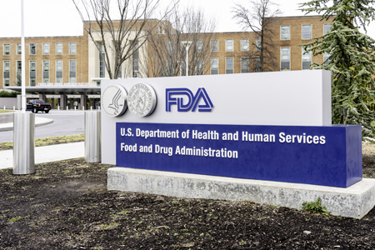FDA's Draft Guidance On Safety Testing Of Human Allogeneic Cells For Use In Cell-Based Therapies
By Amanda Mack and Alicja Fiedorowicz, Dark Horse Consulting Group

In April 2024, the U.S. FDA released the draft guidance titled Safety Testing of Human Allogeneic Cells Expanded for Use in Cell-Based Medical Products.1 The guidance aims to supplement existing FDA guidance documents to assist sponsors of such products in meeting regulatory requirements set out in 21 CFR 610.18(c)(1) and 312.23(a)(7) to de-risk safety concerns within their IND or biologics license application (BLA).2,3,4,5 By integrating with these established guidelines, the new guidance will provide an updated regulatory framework with intention to cover safety testing of a broader spectrum of cell-based products, reduce redundancy, and ensure comprehensive oversight. The FDA is actively seeking comments until July 29, 2024, to further strengthen and inform this draft guidance.
In this article, we highlight key points and offer considerations that explore the benefits and limitations of this draft guidance. We hope to encourage developers to consider their own relevant experience relative to the goals of this guidance and consider submitting suggestions and comments that assist FDA in achieving greater clarity toward a shared objective that could streamline development of safe allogeneic cell-based therapies.
Scope Of The Draft Guidance
There is a pressing need for clear and standardized safety testing that matches, or at least catches up to, the current pace of technological advancements within the cell therapy field. Current cell-based therapies present unique challenges that do not fit well within the outdated regulatory paradigm. The scope of this guidance is intended to encompass cultured allogeneic cells and banks that are part of the final drug product, inclusive of genetically modified allogeneic cells. The guidance aims to address this need by providing comprehensive recommendations for assessing potential risks associated with these products, placing patient safety as top priority. By outlining specific requirements and expectations for safety testing, the FDA intends to create a more consistent regulatory environment that reflects its thinking relative to the current state of the field. This helps developers understand what is needed to support successful IND and BLA submissions, thereby facilitating the development and approval process for novel cell-based therapies. By opening this draft for public input, FDA is demonstrating its receptiveness to feedback in support of a common goal to improve guidance for developers seeking to bring safe and effective allogeneic treatments toward a broader range of patients.
The FDA's draft guidance emphasizes a familiar theme seen across many of its guidance documents: a risk-based approach. From this perspective, it focuses on the following key considerations and their potential to impact drug product safety risk: 1) the expansion potential of the cellular material, 2) the raw materials used to facilitate expansion and banking, and 3) the number of patients who are intended to be treated by medical products derived from the allogeneic cells. These safety considerations are intended to apply to a broad range of allogeneic cell-based products, including live cells, inactivated cells, cell lysates, combination products of cells with drug and/or device, and cell-derived particles (e.g., extracellular vesicles) inclusive of genetically modified cell banks. However, it excludes feeder cells and cell substrates used solely in the manufacture of non-cell-based products such as viruses or recombinant proteins, which are addressed elsewhere.
FDA organizes its recommendations across the following categories of cell types: continuous, highly expandable cells, and cells with limited expansion capacity. This tailored approach aims to ensure that the safety testing protocols are appropriate for the specific characteristics and risks associated with each type of cell-based product.
Considerations For Continuous & Highly Expanded Primary Cells
Continuous cell lines are capable of unlimited expansion and include embryonic stem cells (ESCs), allogeneic induced pluripotent cells (iPSCs), immortalized cancer cell lines, and transformed cell lines. These lines are expected to support the development of cell-based therapies to treat a large number of patients. Similarly, highly expandable primary cells, like donor derived T cells, can be expanded in sufficient quantities to also address the needs of many patients.
Typically, it has become industry standard to rely on a one- or two-tiered cell banking approach that consists of a master cell bank (MCB) and possibly a second working cell bank (WCB) derived from the well-characterized MCB.2,3,6 FDA provides testing recommendations consistent with previously published guidances with a few notable exceptions.
Whole Genome Sequencing
First, FDA recommends applying whole genome sequencing (WGS) on cell banks of continuous and highly expanded primary cells. On one hand, this finally provides resolution to a regular question in the field regarding the use of the cytogenetic gold standard method relative to other, more sensitive, screening measures to examine genetic integrity such as arrays and sequencing. This recommendation is consistent with our recent observations that FDA is acknowledging the limitations of previous methods in favor of current and more advanced methods offering higher sensitivity. This provides clear demonstration of FDA’s commitment to integrate and adapt to the technological advancements. Importantly, the timeliness of this recommendation aligns more favorably with decreasing costs for sequencing which, in turn, will make it increasingly more accessible to cell therapy developers than a few years ago. On the other hand, FDA has not yet provided clear guidance on how to assess the large amounts of data generated from sequencing nor suggested approaches regarding data governance particularly around personally identifiable information. Furthermore, with a recommendation of at least a 50x read depth, it’s not a matter of if, but a matter of when a mutation(s) is found. A critical concern at the forefront of developers’ minds is what to do when a mutation is identified and how to distinguish it as a “mutation of concern” or not.7 Naturally, a risk-based approach based on sound scientific rationale can be successful when navigating these findings. However, such an approach requires sponsors to conduct detailed risk assessments, which can be complex and resource-intensive, potentially posing challenges for smaller companies or those with limited expertise in risk analysis. Furthermore, differing interpretations of acceptable risk can lead to variable approaches to safety testing.
High Throughput Sequencing
Second, FDA suggests considering high throughput sequencing measures as an alternative to the current industry accepted standard for in vivo adventitious virus testing involving inoculation of adult and suckling mice and embryonic chicken eggs with test articles. Traditional in vivo adventitious virus testing is costly, time consuming, and requires a significant amount of material for testing, which has traditionally presented a hurdle, especially for early developers aiming to prioritize spending activities. A sequencing approach provides the advantage of casting a much wider net for detecting potentially harmful agents at reasonable sensitivity that has the added advantage of a lower cost and sample burden. However, cell therapy developers will need to successfully achieve regulatory buy-in to support the use of these alternative approaches. FDA advises that developers intending to use high throughput sequencing methods for adventitious virus testing engage FDA early and prepare to provide a compelling qualification and/or validation plan to limit potential for a clinical hold. The work and investment required to qualify and/or validate this newer approach may deter developers, particularly those in early stages of development, given the equally high bar of entry when compared with current industry standard options.
De-Risking Safety Concerns From Residual Detection Of Reprogramming Vectors
Third, FDA highlights the need to de-risk the potential for safety concerns arising from the residual detection of reprogramming vectors used to derive iPSCs. At present, there are a few primary approaches to reprogramming that include plasmid vectors, viral vectors, RNA, small molecules, or any combination thereof. Interestingly, FDA only addresses testing for iPSCs derived from either plasmid or viral reprogramming vectors. Therefore, those developers relying on iPSCs derived from RNA-mediated approaches, for example, might be wondering if they are exempt from such testing, relying on a justification that the half-life of RNA is expected to be exceptionally short, rendering risk negligible. Therefore, this represents an opportunity to press FDA to expand on this recommendation in the final version and clarify expectations from developers using iPSCs derived from alternative modalities since FDA is likely to extend these recommendations to confirm loss of residual RNA in cell banks, drug substance, or drug product.
Species-Specific Virus Testing
Finally, FDA directs developers to consider species-specific virus testing, especially if materials used in the manufacture of the cell bank have been flagged as high risk. For example, this concern applies to human ESC lines that were originally cultivated on mouse feeder cells during their development history and typically applies to ESCs cultivated prior to Aug. 9, 2001. FDA will consider final products manufactured from these ESCs as xenotransplantation products requiring adherence to the original PHS Guideline on Infectious Disease Issues in Transplantation.8 Thankfully, FDA expressed that it does not intend to hinder a developer’s ability to use such banks and indicates while it may be necessary to demonstrate to FDA that the line is free from infectious agents, including murine infectious agents, current technology should be readily available to perform this without undue burden as stated in its update to the original guidance.8,9
Considerations For Primary Cells With Limited Expansion Capacity
FDA also describes the safety testing for donor derived primary cell lines capable of only limited expansion in culture and, thus, provide a limited amount of drug product to treat few or a single patient. Examples of cells with limited expansion include but are not limited to primary human chondrocytes, keratinocytes, and hepatocytes. The term “limited expansion” lacks precision that could leave developers questioning where the line is drawn with respect to rate of cell replication. In these cases, it is important to engage with the FDA early to clarify expectations around extent of testing relative to the number of passages and scale of cell culture.
It is encouraging that FDA acknowledges that the amount of cell material available for testing may be too limited to reasonably support a full adventitious agent testing panel. This should offer relief to developers that are able to build a robust justification that supports a strategy for limited testing balanced with measures that monitor and implement in-process controls (see Section VI of the guidance for testing expectations). The abbreviated list of recommended tests includes sterility, mycoplasma, human pathogen testing by PCR, and in vitro adventitious virus testing. Additional species-specific testing may be required if safety risks are identified for reagents used during manufacture. If there is concern that the abbreviated list may still deplete too much cell material, the FDA provides alternative approaches for consideration such as testing the end of production material. This involves expanding a stock from a cell bank or product lot to achieve the material needed for safety testing. In the case of high-risk materials used in the manufacturing process, the FDA suggests performing appropriate tests directly on the material. This requires developers to retain sufficient samples produced from the same lot or use the same manufacturing procedure as the cell bank production. Ultimately, any uncertainties regarding the proposed safety strategy should be presented to the FDA to streamline development and minimize the potential for clinical hold.
Discussion & Remaining Challenges
The FDA drafted this guidance with intention to ensure the safety of allogeneic cell-based products, provide regulatory clarity, keep pace with technological advancements, harmonize with existing standards, and promote innovation in the development of new therapies. These objectives reflect the FDA's commitment to safeguard public health while supporting innovation in the cell therapy field. For sponsors and developers of allogeneic cell-based products, the clarity and specificity provided by the guidance is intended to streamline the development and approval process, potentially reducing time-to-market for new therapies. Given the complexity and variety of allogeneic cell-based products, there could be apprehension that the guidance might not adequately address all potential risks or that its recommendations might be too general to be practically useful for all types of products. However, there is a delicate balance between ensuring safety and promoting scientific advancement. Therefore, we should keep in mind that specific recommendations are likely to narrow flexibility and limit space for entry of novel therapies with unique considerations that do not fit within specifically defined ranges.
Overall, while the draft guidance provides valuable insights into FDA’s current thinking, its limitations highlight areas where additional clarity and support could further benefit stakeholders in the development of allogeneic cell-based medical products. Therefore, we encourage developers to engage FDA by submitting comments that could enhance the value of this guidance and eagerly anticipate industry and expert feedback to inform the final version. For concerns that relate to more specific aspects of a particular product, we encourage developers to take full advantage of opportunities for early engagement with FDA prior to IND submission such as INTERACT, Type B (pre-IND), and Type D meeting requests. These engagements provide opportunities to achieve regulatory buy-in and/or recommendations that could significantly impact critical items along the development path that improve chances for regulatory acceptance.
References
- Safety Testing of Human Allogeneic Cells Expanded for Use in Cell-Based Medical Products, FDA CBER, April 2024 (draft guidance)
- Chemistry, Manufacturing, and Control (CMC) Information for Human Gene Therapy Investigational New Drug Applications (INDs); Guidance for Industry, FDA CBER, January 2020
- Guidance for FDA Reviewers and Sponsors: Content and Review of Chemistry, Manufacturing, and Control (CMC) Information for Human Somatic Cell Therapy Investigational New Drug Applications (INDs), FDA CBER, April 2008
- Code of Federal Regulations, Title 21 Part 610.18
- Code of Federal Regulations, Title 21 Part 312.23
- Mack and Morse, Fulfilling the potential of gene editing: at the tipping point, Cell & Gene Therapy Insights, 2023
- Morse and Manley, FDA’s Updated Guidance on Human Genome Editing: New Implications & Remaining Questions, Cell & Gene, Feb. 27, 2024
- PHS Guideline on Infectious Disease Issues in Xenotransplantation
- Source Animal, Product, Preclinical, and Clinical Issues Concerning the Use of Xenotransplantation Products in Humans, Guidance for Industry, Dec 2016
About The Authors:
 Amanda Mack is principal consultant at Dark Horse Consulting, with 17 years of industry experience and over 20 years in the field of cell and gene therapy. Prior to joining Dark Horse, she established and led clinical platform development, manufacturing, and analytical strategy for 12 years as senior director at Fujifilm Cellular Dynamics, director at Opsis Therapeutics, and director overseeing development of CART platforms at Century Therapeutics. She also acquired her Ph.D. in cancer biology from the McArdle Laboratory of Cancer Research at the University of Wisconsin Madison. At Dark Horse, Mack specializes in CMC strategy, regulatory communications, process development, and operational planning for development road maps toward first in human trials.
Amanda Mack is principal consultant at Dark Horse Consulting, with 17 years of industry experience and over 20 years in the field of cell and gene therapy. Prior to joining Dark Horse, she established and led clinical platform development, manufacturing, and analytical strategy for 12 years as senior director at Fujifilm Cellular Dynamics, director at Opsis Therapeutics, and director overseeing development of CART platforms at Century Therapeutics. She also acquired her Ph.D. in cancer biology from the McArdle Laboratory of Cancer Research at the University of Wisconsin Madison. At Dark Horse, Mack specializes in CMC strategy, regulatory communications, process development, and operational planning for development road maps toward first in human trials.
 Alicja Fiedorowicz is a senior consultant at Dark Horse Consulting (DHC), with more than a decade of experience in the pharmaceutical industry. Fiedorowicz supports DHC clients by developing robust analytical and quality control strategies, providing comprehensive CMC regulatory support, and preparing submissions for regulatory agencies.
Alicja Fiedorowicz is a senior consultant at Dark Horse Consulting (DHC), with more than a decade of experience in the pharmaceutical industry. Fiedorowicz supports DHC clients by developing robust analytical and quality control strategies, providing comprehensive CMC regulatory support, and preparing submissions for regulatory agencies.
